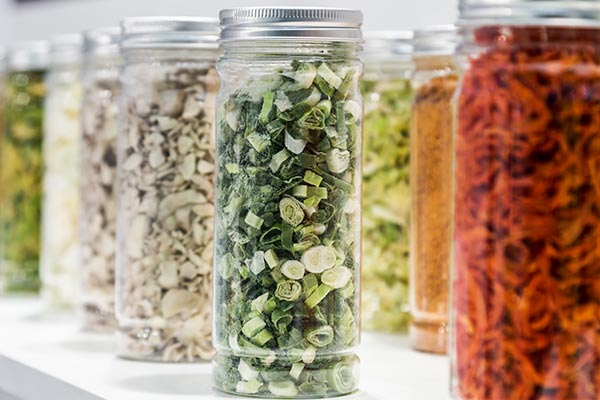Tips for protecting your food supply when the grid goes down

(Natural News) As a prepper, it’s important to know about proper food storage and how to gather the necessary supplies for your stockpile. But how do you prevent food spoilage if you experience a long-term power outage? (h/t to BeansBulletsBandagesAndYou.com)
Before SHTF, make sure you have backup power for your appliances, especially your fridge and freezer. Otherwise, your perishables can spoil.
Ideally, the bulk of your food supply won’t require refrigeration. That way, if you lose power in your neighborhood, you’ll only have to attend to a fraction of your stockpile.
One way to prevent food spoilage for the items in your fridge and freezer is to have a generator. When the lights go out, start your generator and plug in your appliances.
Without electricity or a cold source, food in refrigerators and freezers may become unsafe to consume. Bacteria in food will rapidly multiply at temperatures between 40 and 140 degrees F. Eating these foods can make you very sick.
If thawed food is still “refrigerator cold,” it can still be eaten. If it still contains ice crystals, you can re-freeze it. Otherwise, dispose of food properly.
If the power goes out, keep these tips in mind to avoid food poisoning:
- Clean cooking and eating utensils thoroughly.
- Keep food in covered containers.
- Discard any food that looks or smells weird or items with an unusual texture.
- Don’t eat foods from cans that are dented, swollen, or corroded. Just because a can looks okay to you doesn’t mean the food inside is still safe to eat.
- Use a refrigerator thermometer to check the temperature in your fridge. Refrigerated or frozen foods must be kept at 40 degrees F or below for proper food storage.
- Don’t open refrigerator and freezer doors unnecessarily. If you keep the fridge door closed when the power goes out, the food inside can stay cold for at least four hours.
- Dispose of your garbage properly to avoid contamination.
Foods you can store at room temperature and those that go bad when the grid goes down
The foods in the list below are generally safe to store at room temperature for one to two days.
The power of the elements: Discover Colloidal Silver Mouthwash with quality, natural ingredients like Sangre de Drago sap, black walnut hulls, menthol crystals and more. Zero artificial sweeteners, colors or alcohol. Learn more at the Health Ranger Store and help support this news site.
- Butter and margarine
- Fresh fruits and vegetables
- Fruit juices
- Hard cheeses (e.g., cheddar and Swiss)
- Ketchup, mustard, and olives
- Opened jars of barbecue sauce, jelly, peanut butter, relish, and salad dressing
The minute the power comes back, check the temperature inside your fridge and freezer. Get rid of anything that has been above 40 degrees F for two hours or more, like the following items:
- Casseroles, soups, or stews
- Cooked pasta, potatoes, rice, and salads
- Cream, milk, soft cheeses (e.g., Brie and feta), and yogurt
- Creamy dressings, mayonnaise, or tartar sauce
- Fresh eggs and egg substitutes
- Lunch meats and meat-topped pizza
- Poultry, raw or cooked meat, and seafood
To keep your fridge cold, keep it full. Fill extra space in your freezer with gallon milk jugs or two-liter bottles mostly full of clean water.
If the jugs or bottles burst, discard them. The ones that don’t burst will help keep food frozen in your freezer, or you can use them to turn a section of your fridge into an ice-box. (Related: Food storage tips and tricks for preppers.)
Dry ice for food storage
If you’ve been warned ahead of time about incoming events (e.g., a hurricane, etc.), stock up on dry ice so you can keep food fresh even during a longer-term power outage. With dry ice, you can make perishable food last several days.
When using dry ice, follow these safety tips:
- Twenty-five pounds of dry ice can keep a 10-cubic-foot freezer below freezing for about three to four days.
- If you’re going to use dry ice to keep your food cold, don’t let it come in direct contact with the food.
- When handling dry ice, wear dry, heavy gloves to avoid injury.
Follow proper food storage guidelines to protect your stockpile even when SHTF and you experience a long-term power outage in your neighborhood.
Sources include:
BeansBulletsBandagesAndYou.com



